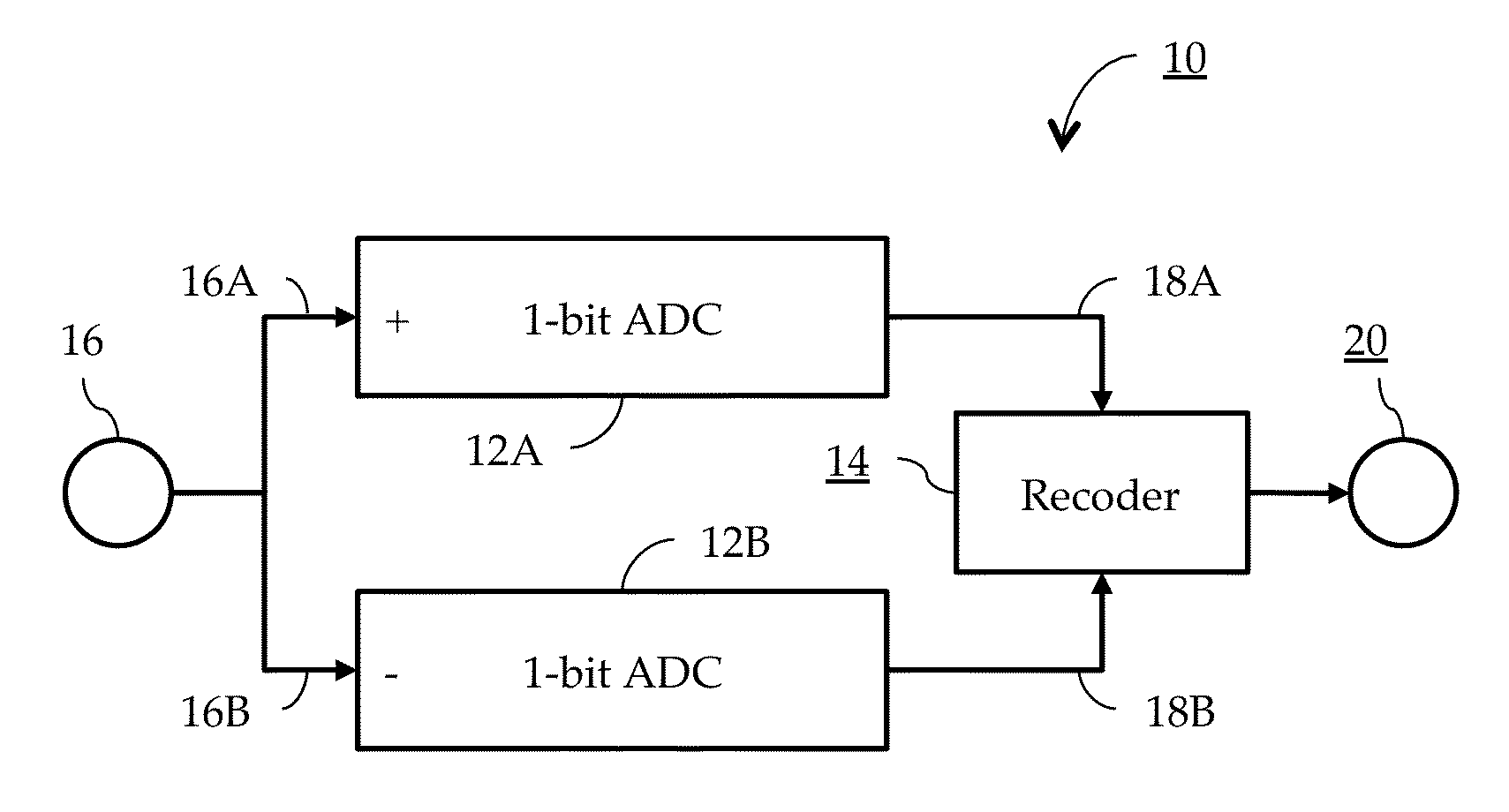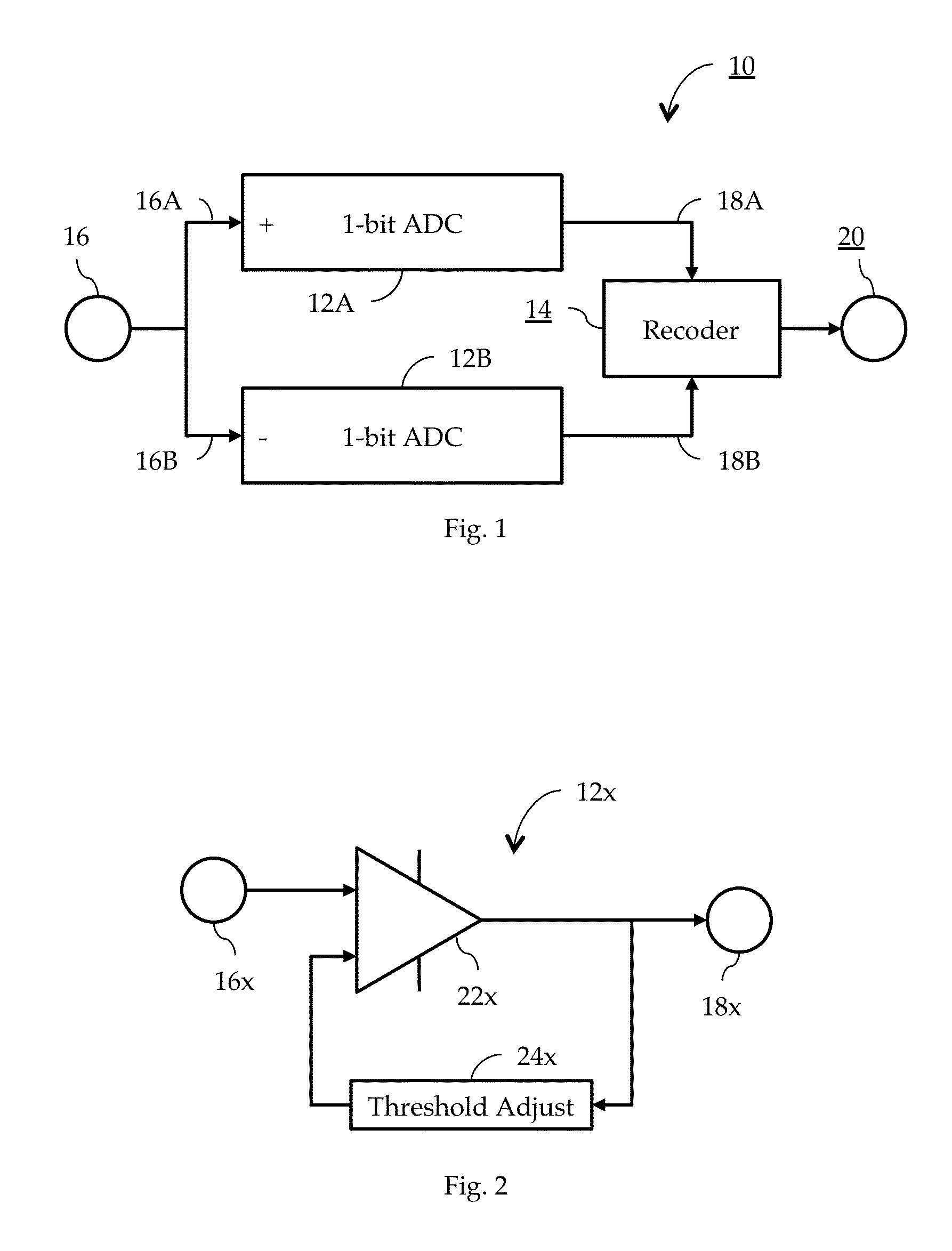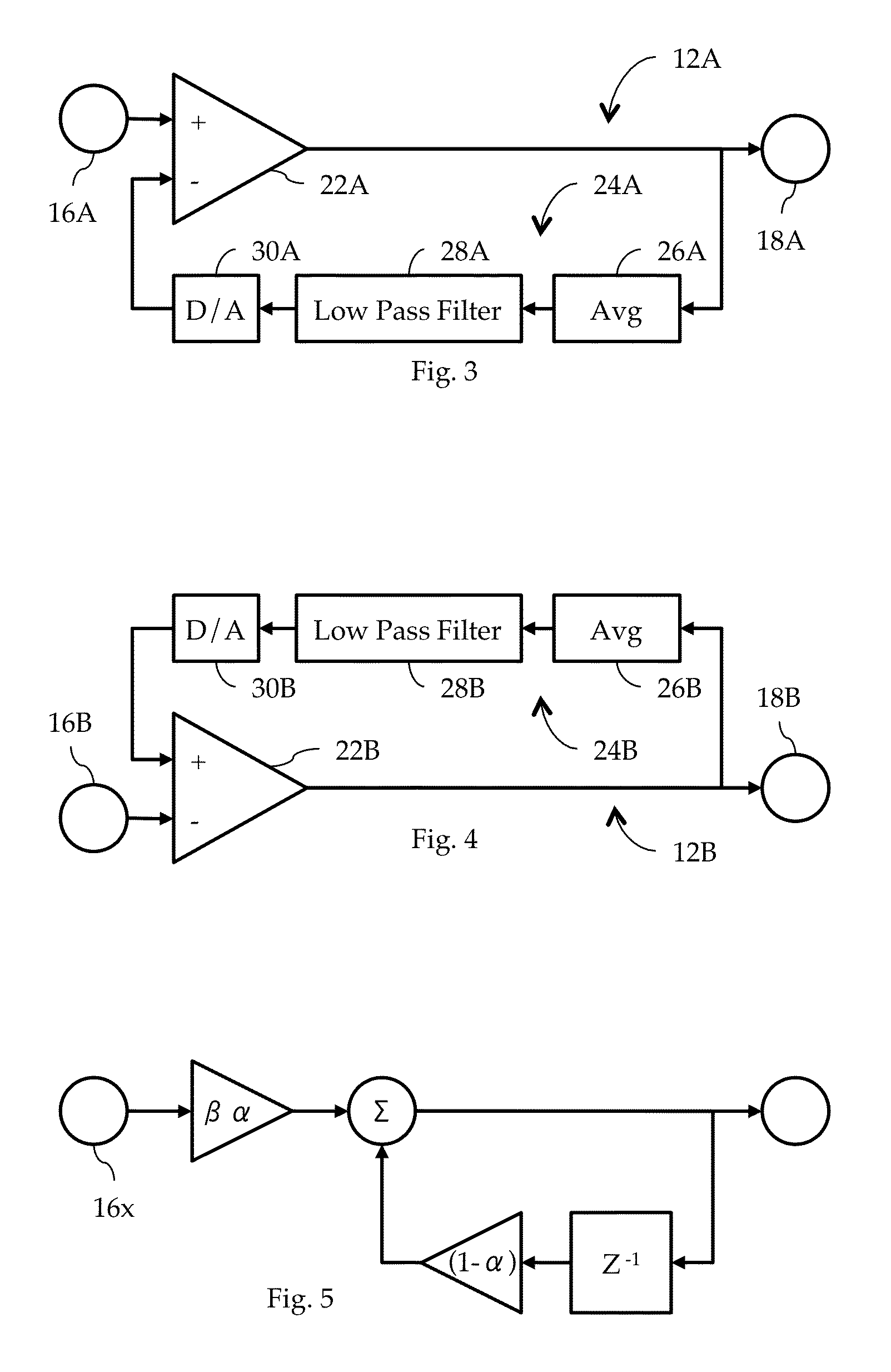Adaptive ternary A/D converter for use in an ultra-wideband communication system
a technology of ternary analog to digital converter and ultra-wideband communication system, which is applied in the direction of transmission system, synchronisation arrangement, transmission, etc., can solve the problems of increasing system entropy, less than optimal circuit/power efficiency, and particularly sensitive implementations to continuous-wave (“cw”) interference, so as to avoid unnecessary proliferation of numbers
- Summary
- Abstract
- Description
- Claims
- Application Information
AI Technical Summary
Benefits of technology
Problems solved by technology
Method used
Image
Examples
Embodiment Construction
[0032]In accordance with the preferred embodiment of our invention illustrated in FIG. 1, our trit-based analog-to-digital converter (“ADC”) 10 (note: hereinafter, we will underline the reference numeral of an element to emphasize that it operates in a trit mode) includes a non-inverting 1-bit ADC 12A, an inverting 1-bit ADC 12B, and a binary-to-ternary recoder 14. In general, the analog input signal 16 is applied to selected inputs 16A / B of ADCs 12A / B, and, in response, each provides a respective binary output, 18A / B. Recoder 14 is adapted to receive the binary outputs 18A / B generated by ADCs 12A / B, and to provide a trit output 20 in ternary form, i.e., [−1, 0, +1].
[0033]In the context of our invention, our ADC 10 can be distinguished from a conventional sign+ magnitude implementation such as that described in Amoroso83, cited above. Consider the strategy for A / D conversion shown in FIG. 5 of Amoroso83; and, note, especially, that there are three separate and distinct switching thr...
PUM
 Login to View More
Login to View More Abstract
Description
Claims
Application Information
 Login to View More
Login to View More - R&D
- Intellectual Property
- Life Sciences
- Materials
- Tech Scout
- Unparalleled Data Quality
- Higher Quality Content
- 60% Fewer Hallucinations
Browse by: Latest US Patents, China's latest patents, Technical Efficacy Thesaurus, Application Domain, Technology Topic, Popular Technical Reports.
© 2025 PatSnap. All rights reserved.Legal|Privacy policy|Modern Slavery Act Transparency Statement|Sitemap|About US| Contact US: help@patsnap.com



